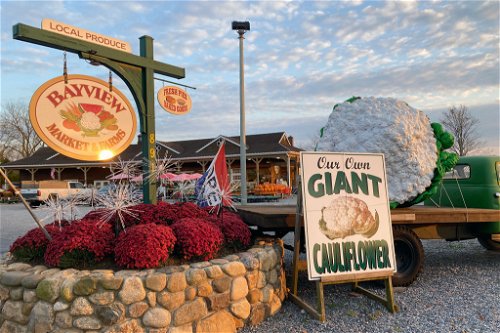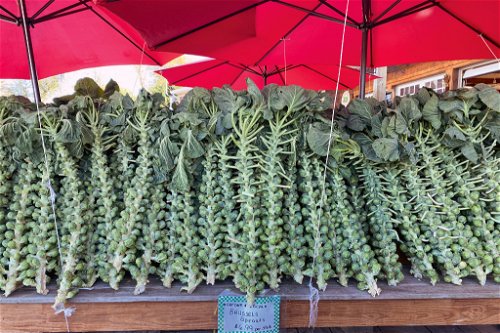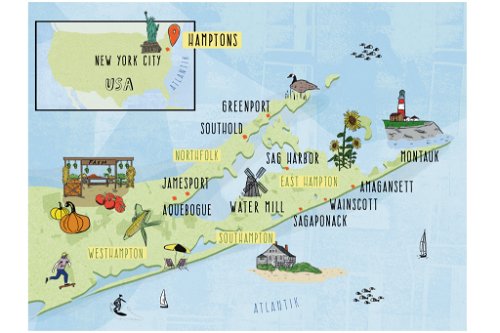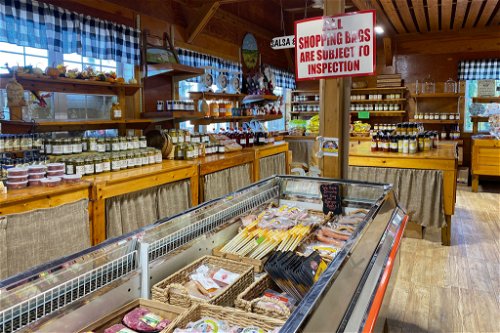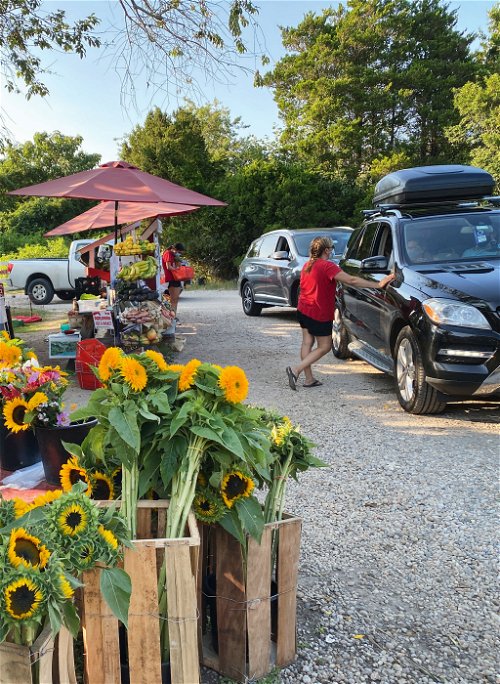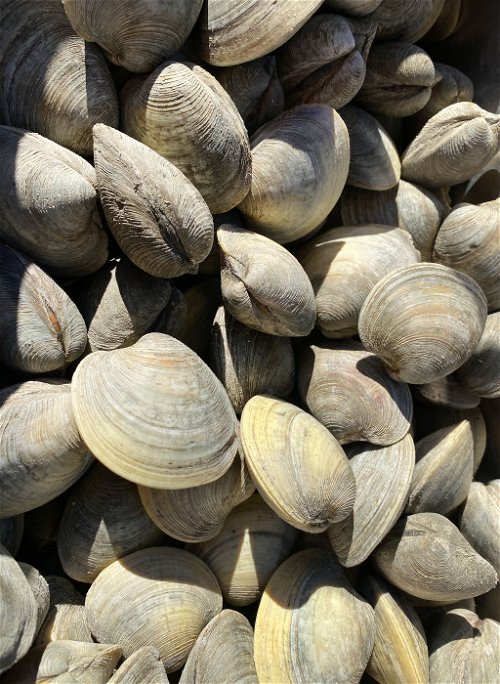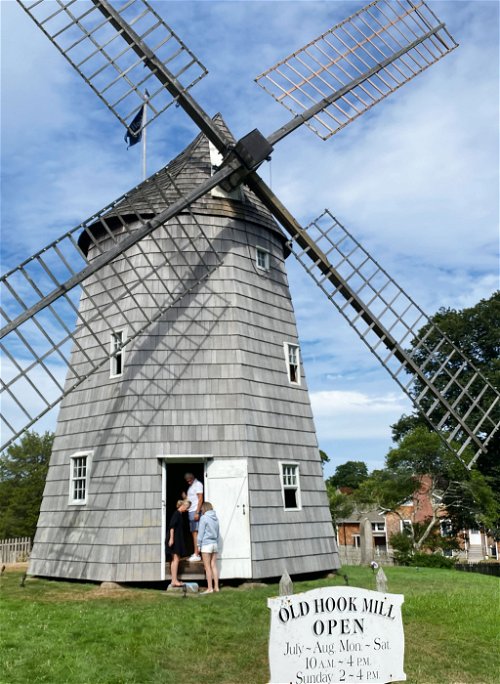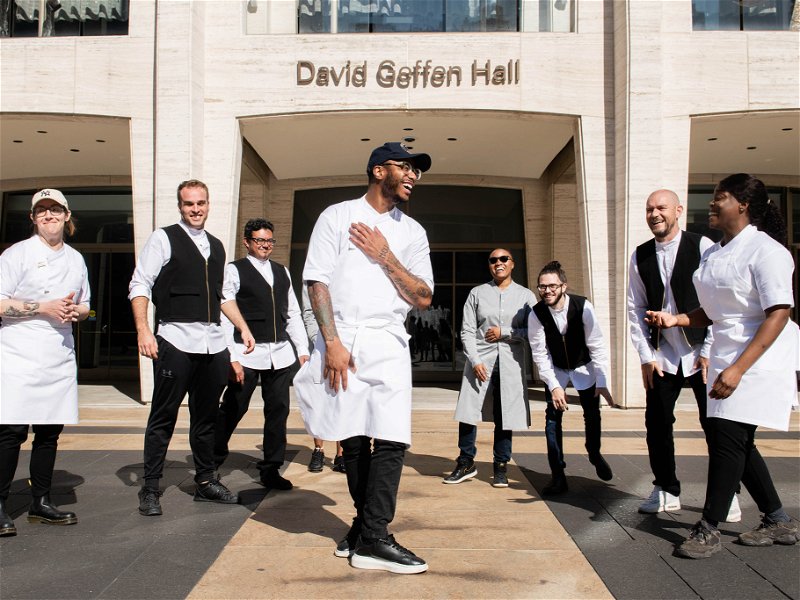Paradisiacal diversity: why the Hamptons' farm stands belong on every New York bucket list
Picturesque, charming, inviting. The "farm stands" at the end of Long Island convey the typical East End feeling and have been the backdrop for many films. Not only do they offer fresh seasonal fruit and vegetables, they are a one-stop store for locals and the who's who of New York society alike.
Bright yellow sunflowers, purple cauliflower, juicy green lettuce. If you stop at Bayview Market & Farms in Aquebogue, you will be amazed. Mountains of gorgeous vegetables are piled up on the wooden tables, both inside and outside. The Farmers Market offers an abundance of everything a gourmet's heart desires or could desire. Romance included.
Shopping here at the farm stands in the Hamptons at the eastern end of Long Island in the US state of New York is associated with feelings of happiness. Among the rich and famous, the rich and famous, as well as the unfamous, the less well-known.
The oversized cauliflower on the old green truck at the entrance is symbolic of what Katie and Paul Reeve have been growing here for seven generations. "We don't sell our products in a standardized way, where a certain amount has to fit in a box and everything has to be a certain size. That way, we can harvest at the last moment when everything is a bit bigger and bring it straight from the field to the stall," says Katie. Her husband Paul grows more than 600,000 square meters of fruit, vegetables and corn directly behind the market. Katie grabs one of the corn cobs, peels it and takes a bite. "You can also eat the sweet corn raw."
Harvesting every week
Paul plans the first corn harvest every year in time for Independence Day on July 4, the US national holiday. He then planted corn 16 times so that he could harvest fresh corn cobs every week until late November. Katie points to huge purple and white beets and laughs: "My husband used slow-release fertilizer for the first time this year. Let's see if these beets become a new trend." Another eye-catcher is the purple romanesco, which can be eaten raw or cooked. This is something you don't often find in the supermarket. Just like Savoy spinach or Savoy savoy cabbage. Both are very popular with people - and the chef also has some recipe tips for those interested: Katie likes to roll meat in the loose, curly leaves of the savoy cabbage. It tastes somewhat milder and sweeter than kale.
Cabbage sprouts are waiting one table over, still on the stalk and ready to pick. There are also small butternut squashes. We know big ones, but small ones? And they are not ornamental pumpkins. The "honeynut squash" looks like a mini butternut squash, but the flesh is even sweeter, more orange and generally stronger in flavor.
Pickups and Ferraris
Ferraris park next to pickups on the roadside. Some people who have stopped pull a kind of beach buggy or ladder wagon through the rows shortly afterwards, overwhelmed by the abundance, and load what they can onto it. The eye eats (or buys) with you here. And the purple romanesco doesn't cost the earth at around six dollars.
Sofia, for example, is on her way home from work. She takes beefsteak tomatoes, half a kilo for three dollars. They are just right, not too soft. The bright red, fleshy oxheart tomatoes go well with her dinner, she thinks. Sofia has already picked out fresh bread and cheese in the next room. For them, the farmers' market is a must. It is a one-stop store for many people here: "I shop here very often. It all looks so nice, fresh, and it's so cozy. I feel at home," says Sofia.
In fact, you can get almost anything here. Katie and her staff at Bayview Market & Farms bake the muffins and fruitcakes themselves. And because the Reeve family wants to offer a full range of products seven days a week, a butcher from Connecticut regularly delivers fresh sausage by boat across the sea. A duck hunter brings the famous Long Island ducks, of course, and dairy farmers provide fresh eggs and milk. The bread comes from the local bakery.
Many of the products are manufactured in the nearby "Food Business Incubator" at Stony Brook University. Here, start-ups can produce and store their products in a professional commercial kitchen. The business incubator was designed as an economic engine to promote agricultural, aquaculture and environmental industries on East Long Island.
Hollywood backdrop
Farm stands like Katie's are more common here on the east end of Long Island. And every farm stand has its own charm. Some have already served as backdrops for films such as "What the Heart Desires" with Jack Nicholson and Diane Keaton or "Revenge".
Other specialties can also be found here: Some stalls, such as the one on Montauk Highway in Westhampton, offer freshly prepared mussels in the summer months. Owner John Carson regularly collects the mussels from the bay himself. He also offers homemade honey and a variety of apples. In addition to Fuji and Jonagold, there are rare varieties such as Winesap, which are well suited for tarts, but are also used here for cider. The apples are sweet, with a spicy finish - and real vintage apples. Its history goes back to the American colonial era.
Legacy of the first settlers
Agriculture on Long Island, just outside Manhattan, was shaped by the European settlers who arrived in the region around 1600. The indigenous people who lived here before colonization mainly grew maize, beans and pumpkins. The "three sisters" formed the basis of her diet. The Europeans, especially the Dutch and English, brought a variety of agricultural methods and crops with them. They grew fruit, grain and vegetables and raised livestock - and thus played a decisive role in the development of modern agriculture on Long Island. Today's towns developed around the agricultural activities.
The ancestors of Paul Reeve, who runs Bayview Market & Farms, also arrived by ship from England 200 years ago during the colonial era. His parents still mainly grew potatoes - that used to be the main focus of agriculture here. Today, other vegetables play a role for him. Organic is not worthwhile, but the soil must meet certain criteria. But the former glacier has left behind a fertile, well-drained sandy loam soil. The seawater that surrounds Long Island on both sides warms the land and keeps the temperature moderate even in the fall. This and plenty of sunshine make the six-month harvest season possible.
The strawberry field opens in June, some of which you can pick yourself. Paul Reeve and his crews do not bring in the final harvest until the end of November. In spring, around Easter, the spinach starts to grow again.
Don't miss out!
Sign up now for our newsletter.

